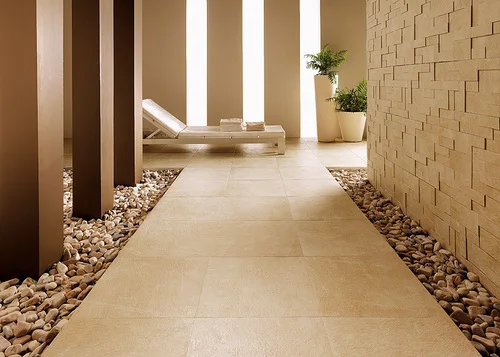
Overwhelmed by the Complexity of Materials? This May Help
 Marble Slabs, Ceramics, Granite Slabs for Flooring Many homeowners are inspired by the classic, vein beauty of marble slabs, such that it is used as an interior finishing, as well as apart component in bathrooms. Since marble slabs come in many colors with varying degree of veining (combined mixture of clay, silt, sand, iron oxide, and chert that have been pressed together to produce a movement), consider the type of vein you prefer, since no two stones are perfectly alike, so there is a harmony of this once they are installed on the floor. Marble for bathroom floors must be compatible for wet conditions, so choose marble with a honed or low-gloss finish for best results, since honed marble doesn’t have the reflective properties of polished marble, and it is typically sealed to minimize damage which is caused by moisture.
Marble Slabs, Ceramics, Granite Slabs for Flooring Many homeowners are inspired by the classic, vein beauty of marble slabs, such that it is used as an interior finishing, as well as apart component in bathrooms. Since marble slabs come in many colors with varying degree of veining (combined mixture of clay, silt, sand, iron oxide, and chert that have been pressed together to produce a movement), consider the type of vein you prefer, since no two stones are perfectly alike, so there is a harmony of this once they are installed on the floor. Marble for bathroom floors must be compatible for wet conditions, so choose marble with a honed or low-gloss finish for best results, since honed marble doesn’t have the reflective properties of polished marble, and it is typically sealed to minimize damage which is caused by moisture.
The Key Elements of Great Materials
Different stone-cutting techniques produce a variety of finishes that maximize the decorative appeal of marbles, like vein-cut marble is cut to enhance the appearance of movement and produce a consistent veining pattern within a marble slab or tiles. Glazed ceramic flooring tiles is made up of a protective layer that rests over the material, thereby, making ceramic tiles impervious to water and stain penetration, as well as naturally resistant to high humidity conditions, such that they are ideal for use in wet environments such as bathrooms or kitchens.
Discovering The Truth About Products
For unglazed ceramic tiles, they have to be sealed, including the grout lines in between ceramic tiles, in order to protect their surface from liquids and make them impervious to water, so as not to weaken the installation and cause mold growth. The benefit of using ceramic flooring is due to the fact that it is extremely tough, which means that tiles are difficult to crack, such that installation can last for 10-20 years and longer if they are well-maintained, and if a tile has a crack from a severe impact, the process of replacing the tile is relatively simple. Granite is made up of mineral components, such as feldspar, quartz and mica, which give a grainy composition and coarse natural texture, and its interlocking crystal structure makes granite an incredible strong, durable, and heat resistant natural material. There are varieties of granite tile surface finish, in which the most popular are the polished, honed, and flamed types. The flamed tiles are for external flooring, decks, pavements, sidewalks, curb stones, and the honed tiles are for indoor/outdoor flooring, as well as wash-rooms and sidewalks, while the polished tiles are used for indoor flooring. When granite tiles are butted, the floors look great; however it is important that the tiles are matched before setting. It is important that granite tile surface be sealed with a water-based sealant to protect the granite from water patches and stains.
